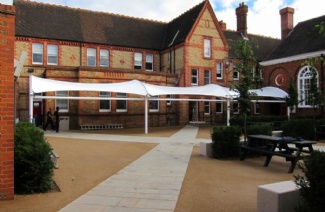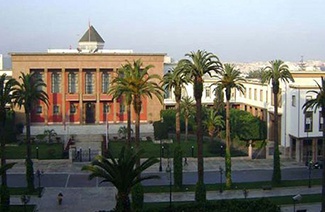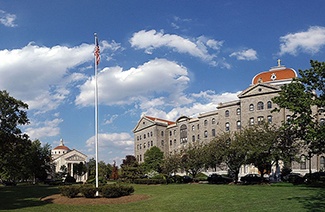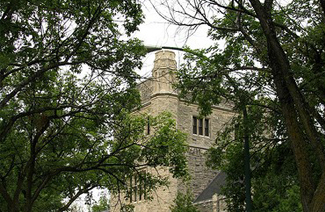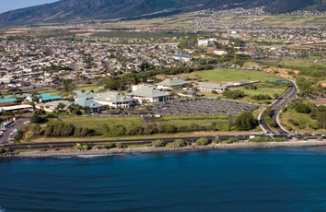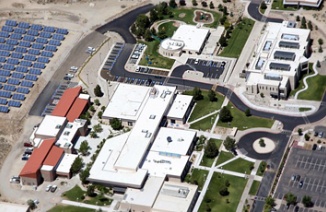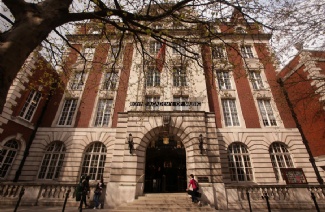Attempts at Determining Earth’s Age
Since the dawn of civilization, people have been curious about the age of Earth. In addition, we have not been satisfied in being able to sate merelythe relative geologic age of a rock or fossil. Human curiosity demands thatwe know actual age in years.
Geologists working during the nineteenth century understood rock bodies,they would have to concentrate on natural processes that continue at a constant rate and that also leave some sort of tangible record in the rocks. Evolution is one such process, and geologist Charles Lyell (1797-1875)recognized this. BY comparing the amount of evolution exhibited by marine mollusks then, Lyell estimated that 80 million years had elapsed since the beginning of the Tertiary Period. He came astonishingly close to the mark, since it was actually about 65 million years. However, for older sequence ofevolutionary development, estimates based on parts in the fossil record.Rates of evolution for many orders of plants and animals were not wellunderstood.
In another attempt, geologists reasoned that if rates of deposition could be determined for sedimentary rocks, they might be able to estimate the time required for deposition of a given thickness of strata, or rock layers.Similar reasoning suggested that one could estimate total elapsed geologictime by dividing the average thickness of sediment transported annually to the oceans into the total thickness of sedimentary rock that had ever beendeposited in the past. Unfortunately, such estimates did not adequately account for past difference in rates of sedimentation or losses to the totalsection of strata during episodes of erosion. Also, some very ancient sediments were no longer recognizable, having been converted to igneous and metamorphic rocks in the course of mountain building. Estimates of Earth’s total age based on sedimentation rates ranged from as little as million to over a billion year.
Yet another scheme for approximating Earth’s age had been proposed in 1715by Sir Edmund Halley (1656-1742), whose name we associate with the famous comet. Halley surmised that the ocean formed soon after the origin of theplanet and therefore would be only slightly younger that the age of the solid Earth. He reasoned that the original ocean was not salty and that subsequently salt derived from the weathering of rocks was brought to thesea by streams. Thus, if one knew the total amount of salt dissolved in theocean and the amount added each year, it might be possible to calculate the ocean’s age in 1899, Irish geologist John Joly (1857-1933) attempted the calculation. From information provided by gauges placed at the mouths of streams. Joly was able to estimate the annual increment of salt to the oceans. Then, knowing the salinity of ocean water and the approximate volume of water, he calculated the amount of salt already held in solution in the oceans. An estimate of the age of the ocean was obtained by diving the total salt in the ocean by the rate of salt added each year. Beginning with essentially non-saline oceans, it would have taken about 90 million years of the oceans to reach their present salinity, according to Joly. The figure, however, was off the currently accepted mark of 4.54 billion by a factor of 50, largely because there was no way to account accurately by recycled salt and salt incorporated into clay mineral deposited on the sea floors. Even though in error, Joly’s calculations clearly supported those geologists who insisted on an age for Earth far in excess of a few million years. The belief in Earth’s immense antiquity was also supported by Darwin, Huxley, and other evolutionary biologists, who saw the need for time in the hundreds of millions of years to accomplish the organic evolution apparent in the fossil record.
Paragraph 2
Geologists working during the nineteenth century understood rock bodies,they would have to concentrate on natural processes that continue at a constant rate and that also leave some sort of tangible record in therocks. Evolution is one such process, and geologist Charles Lyell (1797-1875) recognized this. BY comparing the amount of evolution exhibited bymarine mollusks then, Lyell estimated that 80 million years had elapsedsince the beginning of the Tertiary Period. He came astonishingly close tothe mark, since it was actually about 65 million years. However, for oldersequence of evolutionary development, estimates based on parts in the fossil record. Rates of evolution for many orders of plants and animals were not well understood.
1. The word “tangible” in the passage is closest in meaning to
A. physical
B. related
C. significant
D. helpful
2. It can be inferred form paragraph 2 that Charles Lyell based his study ofthe marine mollusk fossils on which of the following assumptions?
A. The Tertiary Period was separated into division of time that were equalin length.
B. Mollusks lived under rocks in the sea during the Tertiary period.
C. Evolution of mollusks proceeded at a uniform rate over time
D. Mollusks have evolved less rapidly with the passing of time
3. The word “sequence” in the passage is closet in meaning to
A. observations
B. senses
C. series
D. categories
4. According to paragraph 2, Lyell’s strategy for estimation geologic dateswas not very accurate for periods before the Tertiary Period party because
A. Marine mollusks did not evolve until the Tertiary Period
B. fossil records of the very distant past are incomplete
C. there was not much agreement about how to identify or categorize earlier eras
D. the duration of previous geologic periods was difficult to determine
Paragraph 3
In another attempt, geologists reasoned that if rates of deposition could be determined for sedimentary rocks, they might be able to estimate the time required for deposition of a given thickness of strata, or rock layers.Similar reasoning suggested that one could estimate total elapsed geologictime by dividing the average thickness of sediment transported annually to the oceans into the total thickness of sedimentary rock that had ever beendeposited in the past. Unfortunately, such estimates did not adequately account for past difference in rates of sedimentation or losses to the totalsection of strata during episodes of erosion. Also, some very ancient sediments were no longer recognizable, having been converted to igneous andmetamorphic rocks in the course of mountain building. Estimates of Earth’s total age based on sedimentation rates ranged from as little as million to over a billion year.
5. The phrase “another attempt” in the passage refers to
A. trying to understand the fossil record
B. trying to determine the evolutionary rate of marine mollusks
C. trying to understand natural processes
D. trying to determine Earth’s actual age
6. The world “converted” in the passage is closest in meaning to
A. added
B. changed
C. restored
D. reduced
7. According to paragraph 3, all of the following were problems with the calculation of Earth’s age using the study of sedimentary rocks EXCEPT
A. the inconsistency of sedimentation rates over time
B. the effect of geologic process on sedimentary rock
C. the expansion of some sedimentary rocks due to Earth’s internal heat
D. the loss of an unknown number of sedimentary layers due to erosion
Paragraph 4
Yet another scheme for approximating Earth’s age had been proposed in 1715 by Sir Edmund Halley (1656-1742), whose name we associate with the famous comet. Halley surmised that the ocean formed soon after the origin of the planet and therefore would be only slightly younger that the age of thesolid Earth. He reasoned that the original ocean was not salty and thatsubsequently salt derived from the weathering of rocks was brought to the sea by streams. Thus, if one knew the total amount of salt dissolved in the ocean and the amount added each year, it might be possible to calculate the ocean’s age in 1899, Irish geologist John Joly (1857-1933) attempted the calculation. From information provided by gauges placed at the mouths of streams. Joly was able to estimate the annual increment of salt to theoceans. Then, knowing the salinity of ocean water and the approximate volumeof water, he calculated the amount of salt already held in solution in theoceans. An estimate of the age of the ocean was obtained by diving the total salt in the ocean by the rate of salt added each year. Beginning withessentially non-saline oceans, it would have taken about 90 million years of the oceans to reach their present salinity, according to Joly. The figure, however, was off the currently accepted mark of 4.54 billion by a factor of 50, largely because there was no way to account accurately by recycled saltand salt incorporated into clay mineral deposited on the sea floors. Eventhough in error, Joly’s calculations clearly supported those geologists who insisted on an age for Earth far in excess of a few million years. The belief in Earth’s immense antiquity was also supported by Darwin, Huxley, and other evolutionary biologists, who saw the need for time in the hundreds of millions of years to accomplish the organic evolution apparentin the fossil record.
8. The world “approximating” in the passage is closest in meaning to
A. thinking about
B. researching
C. estimating
D. demonstrating
9. The word “subsequently” in the passage is closest in meaning to
A. later
B. furthermore
C. evidently
D. accidentally
10. According to paragraph 4, John Joly’s calculations were founded on allthe following EXCEPT
A. knowing how salty the ocean water is
B. estimating how much salt enters the ocean each year
C. accounting for the amount of salt that is recycled
D. figuring the volume of water contained in the ocean
11. According to paragraph 4, in which of the following ways could Joly’s estimate of Earth’s age be considered significant?
A. It proved that Halley’s idea about the age of the ocean was fairlyaccurate.
B. It indicated that Earth was much older than some scientists had claimed.
C. It was favored by the majority of scientists at the end of the nineteenth century
D. It was the basis for much modern research into the salinity of the ocean
12. The author mentions “Darwin, Huxley, and other evolutionary biologists” in order to
A. Provide evidence that Joly’s calculations inspired scientists working on other lines of scientific inquiry
B. Support the claim that all of the leading scientists of the time believedthat Earth was just over 90 million years old
C. Argue that Joly’s calculations would have been more exact if he had collaborated with experts in other fields
D. Provide examples of scientists who believed the age of Earth to begreater than just a few million on year, like Joly, in order to accountfor their findings
Paragraph 2
Geologists working during the nineteenth century understood rock bodies,they would have to concentrate on natural processes that continue at a constant rate and that also leave some sort of tangible record in the rocks. Evolution is one such process, and geologist Charles Lyell (1797-1875)recognized this. ■By comparing the amount of evolution exhibited by marine mollusks then, Lyell estimated that 80 million years had elapsed since the beginning of the Tertiary Period. He came astonishingly close to the mark, since it was actually about 65 million years. ■However, for older sequenceof evolutionary development, estimates based on parts in the fossil record. ■Rates of evolution for many orders of plants and animals were not well understood. ■
13. Look at the four squares [■] that indicate where the following sentence could be added to the passage.
More fundamentally, Lyell’s evolutionary approach is intrinsically limited because Earth existed long before life and evolution began.
Where would the sentence best fit?
14. Directions:An introductory sentence for a brief summary of the passageis provided below. Complete the summary by selecting the THREE answer choices that express the most important ideas in the passage. Some sentences do not belong in the summary because they express ideas that are not presented in the passage or are minor ideas in the passage. This questionis worth 2 points.
Since the dawn of civilization, people have been curious about Earth’s age
Answer choices
A. It was not until the nineteenth century that attempts were made to determine the relative geologic age of rocks and fossils.
B. Charles Lyell made a good estimate of the Tertiary Period from the fossil record, but his method could not be extended to earlier geologicalperiods.
C. Attempts were made to calculate Earth’s age from the thickness of surviving sedimentary rock and from the current level of the oceans’ salinity.
D. In the nineteenth century, scientists made a number of important, but unsuccessful, attempts to calculate Earth’s age from the record ofvarious natural processes.
E. Darwin and Huxley supported the accuracy of John Joly’s Calculation of Earth’s age because it agree with their view of how long evolution had been in progress.
F. Earth’s true age, 4.54 billion years, was determined by combining data from the geological and fossil records.

